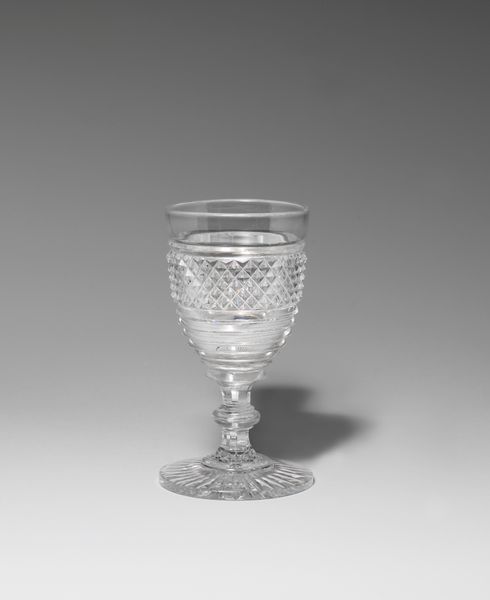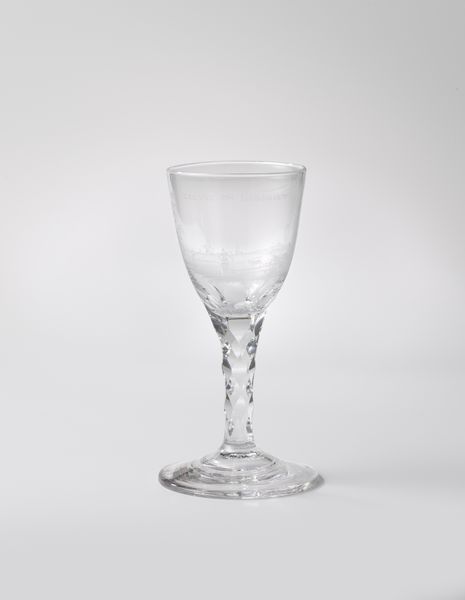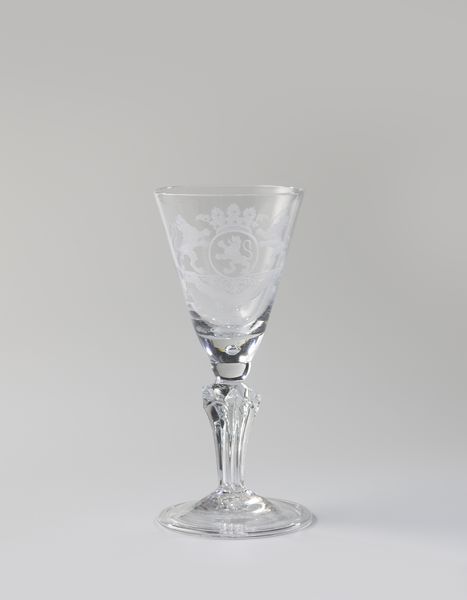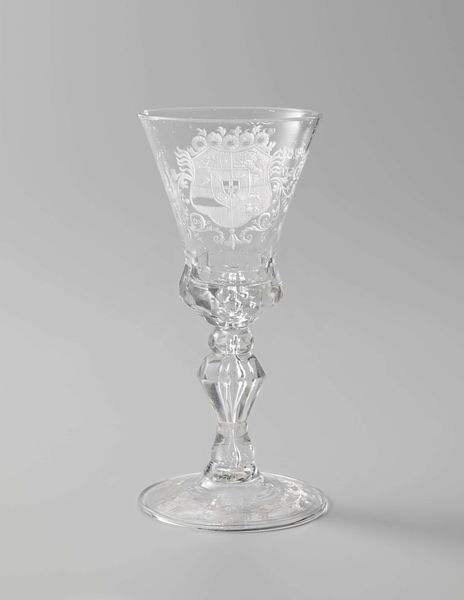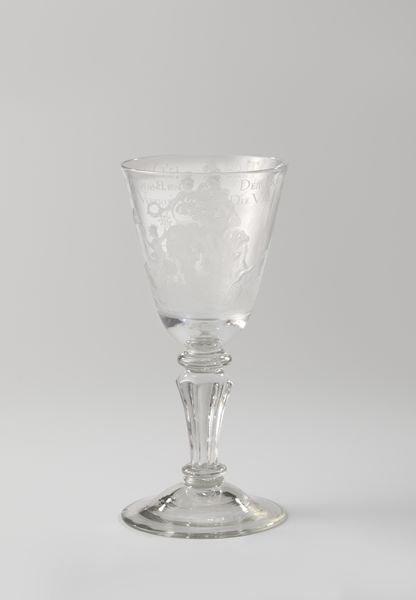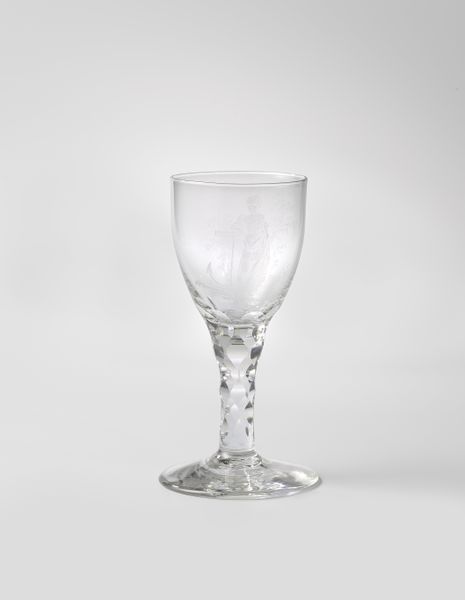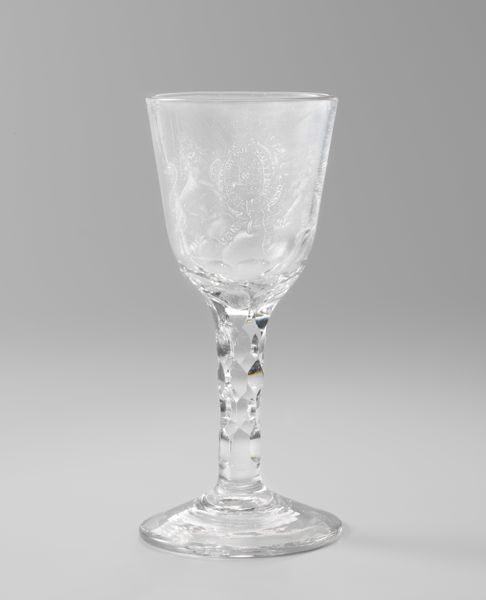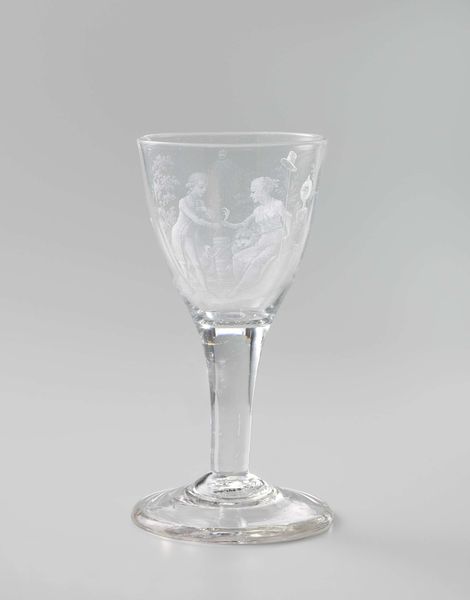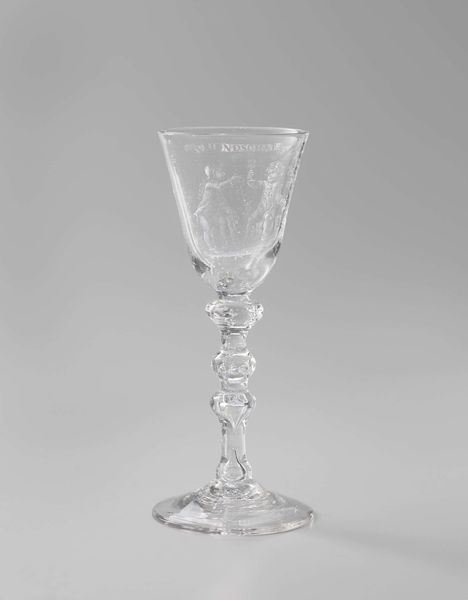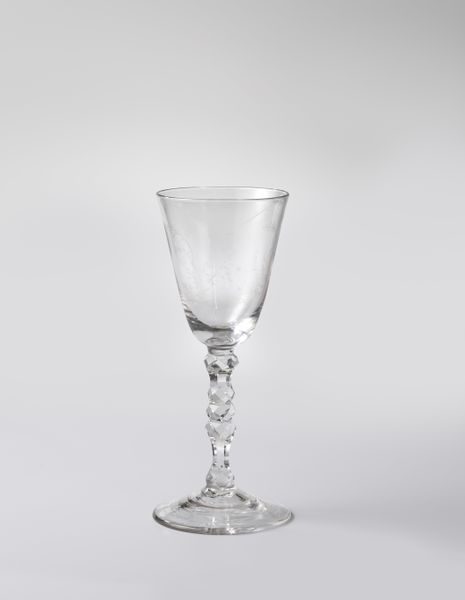
glass
#
glass
#
united-states
Dimensions: 5 5/8 in. (14.3 cm)
Copyright: Public Domain
Curator: Here we have a drinking vessel crafted by the Brooklyn Flint Glass Company sometime between 1850 and 1860. It resides here at the Metropolitan Museum of Art. Editor: Well, my first impression is, it's just beautiful, isn't it? The way the light catches on all those facets... delicate, refined. Curator: Absolutely. And the key here is “flint glass”, which isn't actually flint, but a lead-oxide glass formula developed in England and perfected by American makers in this period. It gave the glass this superior refractive index, that real sparkle you mention. Editor: The means of production, especially. These are objects meant for the emerging middle class, made possible through a combination of industrial manufacturing and highly skilled labor. We forget that someone has to manually cut these patterns on glass. Curator: True. Consider the socio-political context: decorative glass tableware, especially pieces like this, reflected the upward mobility and aspirations of families. It showed they had attained a certain level of social status and domestic refinement, and this desire fuels this sort of market production. Editor: There is a certain showmanship to it all, as this sort of thing would be set out as a spectacle to be seen. What interests me is to try to disentangle this kind of glasswork’s place as something considered mass manufactured yet still requiring human hands to manufacture the products. Curator: And how it moved between both hand craft, art object, and part of larger industry, correct? It really tells a story about how America positioned itself in relation to industrialization and the rest of the world at the time. Editor: Right, exactly! The interplay between the mechanized press and skilled artisans is what is really fascinating to think about. The mold does the labor of making the glass hollow and cup-like. But the cutter determines where, when, and how it shines, that is still their hand in that. Curator: Precisely, this vessel gives such insight into the complexities of American industrial and social history during the mid-19th century. It tells you much about America's relationship with industrial manufacture. Editor: It also offers us a tactile reminder of human labor within that time period, a real testament to that combination of skill, material and production within American history.
Comments
No comments
Be the first to comment and join the conversation on the ultimate creative platform.
